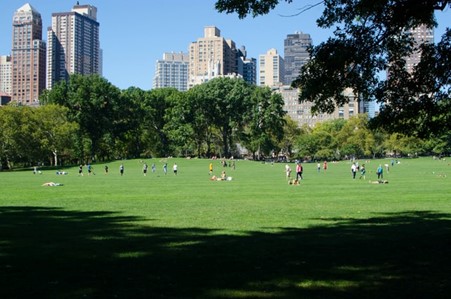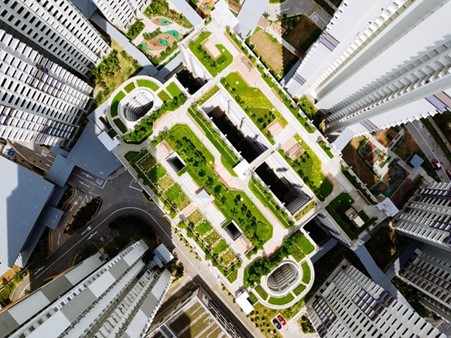Gina Argento of New York serves as CEO and President of Broadway Stages, Ltd. An important part of the mission of Broadway Stages is partnering with local residents and Gina Argento notes that of the many projects where the company has teamed up with the surrounding community, it’s those related to sustainable living and development that draw the most interest and have the best outcomes.
Green initiatives can include a wide array of projects says Gina Argento, from recycling programs to energy efficiency measures and, when implemented in urban areas, these efforts help promote environmentally friendly practices that benefit everyone. As more cities go green, they can help to conserve resources, reduce pollution, and save money on utilities and infrastructure.
Sustainability projects have gained a lot of attention in recent years and, as they become more mainstream, urban communities look set to benefit the most. In today’s post, Gina Argento of New York takes a look at how green initiatives are transforming urban centers and helping cities become eco-friendly and more welcoming environments.
Gina Argento on What Constitutes Modern Green Initiatives
Traditionally, Gina Argento of New York explains that green initiatives were any program designed to make a space more environmentally friendly. Nowadays, though, green initiatives have taken on a greater role in urban design, extending to sustainable building design, waste management, smart lighting, and even into the foundation of urban electrical grids.
As climate change continues to become a greater threat, cityscapes have embraced the principles of green technology and incorporated them in the following ways:
• Green roofing
• Improved public transport
• Superblocks
• A shift towards renewable energy
Although these examples represent a small section of green initiatives currently in place around the world, they’ve already made a significant difference in some of the most populated areas.
Green Projects Reduce Reliance on Air Conditioning
On paper, air conditioning seems like a good idea—it’s hot outside so you use technology to cool your home and office. Yet, by cooling the inside of a building, air conditioners generate even more heat and contribute to the already sweltering temperatures outside. Essentially, they generate emissions, produce their own heat, and force interior heat back out into the environment.
Gina Argento of New York explains that this creates a positive feedback loop where everyone is forced to use the AC more and more to compensate for rising temperatures, only to create more heat. In cities where everything is made from boiling metal and concrete, packed together with thousands of air conditioning units, it quickly becomes an oven far warmer than surrounding rural regions.
Many urban designers across Europe and Latin America have worked to reverse these effects by incorporating and even enforcing green spaces in urban design. For example, Gina Argento says Basel, Switzerland has codified requirements that all new buildings must have green roofs. These roofs help cool the air through evapotranspiration and insulate the interiors from solar rays.
Additionally, Medellín, Colombia has begun building green corridors throughout the city to provide more shade, reduce air pollution, and absorb heat through the same principles of evapotranspiration. As more cities jump on board this trend, they will help reduce the physical warming effects of climate change and make urban centers more livable.

 New Green Designs are Reducing Traffic and Emissions
New Green Designs are Reducing Traffic and Emissions
Barcelona, Spain has taken a unique approach to tackle climate change and it’s clearly visible from above. Starting in 1993, the city of nearly six million people began restructuring its layout around superilla, or concentric mega-blocks consisting of 9 to ten smaller blocks built around an inner courtyard. This design provides residents with everything they might need within a short distance and helps reduce traffic on larger boulevards.
Today, Gina Argento of New York notes that Barcelona is one of the most walkable cities in Europe and has experienced a 36% decrease in emissions. Meanwhile, other cities, such as Hong Kong, have embraced green public transportation, centered around electromagnetic subway systems, electric buses, and other shared spaces.
Renewable Energy is Reducing Utility Costs
Gina Argento reports that wind turbines and solar panels are increasingly becoming a staple in many cities and, in some cases, they’re even mandatory. In San Francisco, for example, all new buildings must be equipped with solar panels and, as of 2016, the city has over 4,000 solar installations. This has helped offset nearly 73,000 metric tons of carbon dioxide, the equivalent of taking 15,000 cars off the road.
Not to be outdone, Copenhagen, Denmark has set a goal to be the world’s first carbon-neutral city by 2025 and, to reach this target, Gina Argento of New York says the city has invested in a wide array of renewable energy sources. These include an offshore wind farm, solar panels, biomass plants, and even a geothermal power plant. Combined, these initiatives have helped Copenhagen reduce its carbon emissions by 42% since 2005.
Final Thoughts
As cities continue to grow and the effects of climate change become more apparent, the need for green initiatives will only become more pressing. While it’s impossible to know exactly what the future holds, one thing is certain – Gina Argento of New York explains cities are becoming increasingly eco-friendly and, as they do, the quality of life for urban dwellers will continue to improve.








